Occupation Architect Books Evolutionary architecture Role Architect | Name Eugene Tsui Spouse(s) Elisabeth Montgomery | |
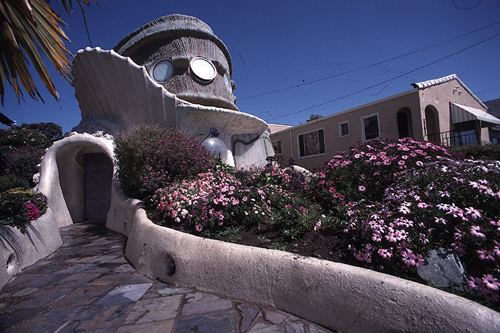 | ||
Born September 14th, 1954- Cleveland, Ohio Website Tsui Design and Research Inc. Education University of Oregon, University of California, Berkeley Structures Residence for Florence and William Tsui | ||
Dr eugene tsui architect
Eugene Tssui (also spelled Tsui, born September 14, 1954) is an American architect. His built projects are known for their use of ecological principles and highly experimental "biologic" design, a term coined by Tssui himself in the 2010 issue of World Architecture Review. He has also proposed a number of massive, radical projects, such as a bridge over the Strait of Gibraltar and a 2-mile-high tower capable of housing 1 million residents.
Contents
- Dr eugene tsui architect
- Biography
- Philosophy and style
- Built projects
- Proposals and In Progress Projects
- Other Aspects of Career
- References
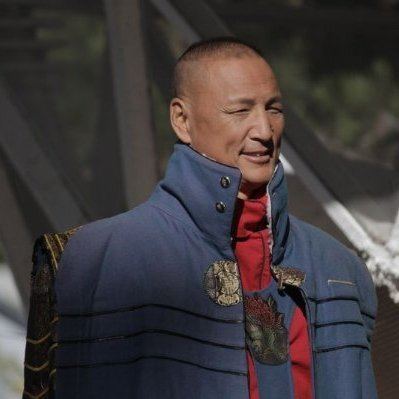
Biography
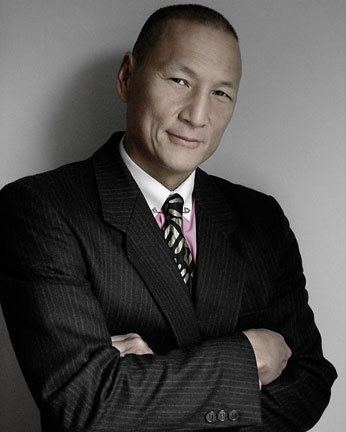
Tssui was born in Cleveland, Ohio, the child of Chinese immigrants, and was raised in Minneapolis, Minnesota. Despite the encouragement of his friends and family to pursue medicine, and a wide variety of interests in his youth (including piano and drum playing, martial arts, and flamenco dance) Tssui decided to pursue architecture. After working in numerous offices and institutions, including the Organizing Committee of the 1976 Montreal Summer Olympics, where he was accepted at Columbia University's Graduate School of Design, based on his professional work in architecture offices. His unconventional designs did not match the expectations of the university, and he left to be apprenticed under architect Bruce Goff instead. He later received a bachelor of architecture from the University of Oregon, along with graduate studies at the University of California, Berkeley where he earned two masters and a doctorate. Tssui specializes in nature-influenced architecture, preferring shapes and forms inspired by living creatures and natural constructions to standard rectilinear designs. He has won numerous scholarships and grants for his work in architecture, including those from the Graham Foundation and the National Endowment for the Arts.
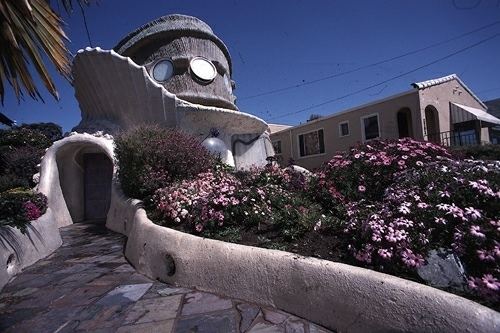
Apart from his work in architecture, Tssui has pursued assorted other areas of interest. His efforts in design extend out to clothing and furniture, and often reflect similar concerns about movement, weight, and sustainability as appear in his architectural designs. He also pursued a number of athletic endeavors. The most notable titles to his name include the super middleweight boxing title in the 2005 Ringside World Championships, the world's largest amateur boxing tournament, and the Presidential Sports Award, both of which he won eight times. He is also a four-time Senior Olympics Gymnastics All-Around Champion.

Tssui is married to sociologist and educator Elisabeth P. Montgomery, Ph.D.
Philosophy and style
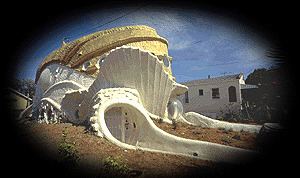
Tssui believes nature to be an incomparable educator, with knowledge of design and construction borne of the necessary adaptation to constantly-evolving systems. Exploring the hows and whys of nature's workings, and looking at the active and reactive relationships of organisms with the surroundings are some of the driving forces behind Tssui's designs. According to Tssui, humans are students of nature, who is the educator. In order to create efficient and sustainable living spaces and lifestyles, architecture must draw from nature to achieve the optimum solution to a given problem. Tssui searches for design elements that work to place the responsibility of environmental and human health back into the daily conscience and behaviors of human life. This outlook must then be expressed in the building’s spaces, both interior and exterior, as well as in the detailing, and relationship with the site. Tssui also underlines the desire to create responsive buildings which not only work in tandem with and prevent further damage to the environment, but also restore damage that has already been done.
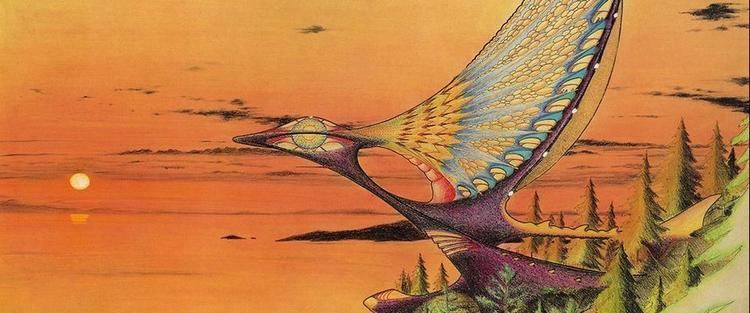
From this philosophy, Tssui’s work derives a biomimetic aspect, which he initially discussed in terms of evolutionary architecture and has in more recent years begun to refer to as ‘’biologic design’’. Deriving from the Latin bio, meaning alive or natural, and logic, meaning well-reasoned, Tssui’s conception of biologic architecture asks the question “What would nature do given this context, requirements, and functional goals?” The goal of this approach is to make buildings that take into account challenges of the environment and apply the "knowledge" exemplified by other natural organisms inhabiting the site—in this way preparing for the environment, and ultimately deflect normally-disastrous calamities. Some key aspects of Tssui's biologic design include:
From these aspects of design, the resulting architecture works in tandem with the environment, drawing inspiration from the ecosystems around the structure to produce a sustainable and adapted building. As a result of these tenets, Tssui derives a distinctive style of architecture which makes use of curvilinear forms, sails, "wings," egg-and-sphere-shaped structures, closing wall and roof systems, and other elements which are highly reflective of the natural world. Those who have lived in Tssui's spaces have spoken of the design exuding "freedom and energy," and ultimately encouraging creativity.
Built projects
Tssui's built designs include the Watsu School at Harbin Hot Springs ("a series of five spherical buildings connected by a string of hallways and surrounded by a trough of cooling water"), several residential homes embodying his ecological principles, and his firm's headquarters in Emeryville.
His design for his parents' house in Berkeley, California is known for its unusual round shape and its structural concept. Officially called "Ojo del Sol" ("eye of the sun"), it is also known as the "Fish House" and, according to Tssui, is based on the anatomy of a tardigrade. The materials used in making the Ojo del Sol include cheap and recycled materials that draw inspiration from the Cholla cactus which is virtually fireproof. Tssui designed the house with the goal of making it the "safest house in the world", intended to survive fires, earthquakes, flooding, and termites.
The headquarters for Tssui's company, Tsui Design and Research Inc. is also a building of his design. The building was started in 1991 and its final phase of construction completed in 1998; the design utilized recycled materials for construction, and was built with energy conservation in mind.
Tssui also designed a zero-energy dwelling, known as the ZED Residence, located in the foothills of Mount Shasta, California. The geodesic dome maximizes the “strength-to-weight” ratio found in many super-strong objects, and dissipates forces from wind and earthquakes. Other projects include his showcase building in Shenzhen, China, known as the Ecological House of the Future. He is also the designer behind the Reyes Residence in Oakland, California, which is notable for its dragonfly-like roof ventilation "wings."
Proposals and In-Progress Projects
Some of Tssui's notable unbuilt proposals include:
Other Aspects of Career
Teaching
Tssui has worked in professorial duties and as a lecturer at a number of universities, including:
Design
In addition to his architectural designs, Tssui also designs clothes. Some notable examples include prototypes with sequin-like solar panels which would allow the wearer to charge and power their personal electronic devices. Tssui's clothing designs have appeared in magazines such as Mondo 2000 and Hyphen. The 2008 Winter cover of the magazine Hors Ligne also features one of Tssui's clothing designs.
Tssui's clothing design is described as "moving architectural clothing" and reflects the biologic principles found in his architecture, in that his clothing designs are meant to adapt to the wearer's physical activity as well as protect from the elements. Some of the stylistic influence of his architecture also bleeds over into his clothing design, with ridges, spines, and wings all featuring in his designs.
In his furniture design, Tssui uses principals of maximum strength using the least amount of materials: similar principles which are found in his biologic style of architecture.
Movies and Other Media
Tssui was the subject of the film TELOS: The Fantastic World of Eugene Tssui, which premiered at the Architecture and Design Film Festival in Los Angeles on March 13, 2014. The film held screenings at various locations in the United States as well as abroad.
Additionally, Tssui has appeared on various television channels, including PBS, the Discovery Channel, CTV News Channel and Asian television channels CCTV and SinoVision. A number of short films have featured him and his work as a subject, including "Nature's Blueprints." Tssui has also contributed to a number of short films, including "S.A.C.E.Y./SAFE PLACE ALTERNATIVE" and "Time To Save the Wolves," for which he composed the piano music.
He has also been featured on radio, and has interviewed with Jack Foley.
